Willie Nelson has played the same Martin N-20 nylon-string acoustic guitar since 1969. Serial number 242830. The instrument is an eternal flame of creative freedom, one of a kind and beautiful — just like Willie.
A more mainstream musician might insist no true professional should ever lower themselves to pick at those strings. You’ll find no technical or acoustic benefits flowing from a 50-year-old guitar with a giant hole worn in the belly.
None of that matters to Mr. Nelson. He keeps his old guitar because there’s just nothing that sounds quite like Trigger. It’s been much the same for Ishmael and me over these past three years.
I didn’t start shooting with the Fujifilm X-Pro 1 because I wanted the latest and greatest camera body. I didn’t choose to fall in love with a camera released over a decade ago.
It all started because I was seeking out the right tool for an immensely particular job. Once I had the X-Pro 1 in hand, suddenly everything that I had read and heard about this unassuming shooter made perfect sense.
I got it. I understood. Like Willie and Trigger, I’ll stay with Ishmael till the end.
But why?
I am a professional photographer. Yes, I am compensated (usually with money) for all my photography shenanigans. I’m even considered an authority on the craft within certain circles of high breeding.
I’ve shot everything. For years my primary digital bodies consisted of full frame Sony mirrorless cameras. My backups were a successive line of Canon DSLR full and cropped sensor bodies.
I’ve tested every single medium format mirrorless digital camera system Hasselblad has ever produced, plus five of their exquisite XCD lenses. I’ve reviewed 34 total lenses from Tamron, Sigma, and Rokinon. GoPro insists on keeping me around as a sponsored athlete no matter how unathletic my frame becomes.
After all this, I sit here contented at the end of my own little photographic rainbow with my X-Pro 1. Who could have predicted this unassuming, outdated, battle-worn 16-megapixel camera would end up being my very own pot of gold?
Fight Me
The Fujifilm X-Pro 1 mated with the Fujinon 35mm F/1.4 R Super EBC is my all-time favorite, end all be all, final death row digital camera setup. Period.
Go ahead. Fight me. I will die on this hill. I’m far from the only poor soul to stake their lives on the merits of the X-Pro 1 (or the X-M1/X-E1 for that matter).
Yet, for every Fujifilm evangelist, there is a non-believer. For each person standing unshakably sure of the Fujifilm platform, there is another equally convinced the belief is nothing more than self-induced delusion, tunnel vision, or brand fanaticism.
Any number of articles and videos float around the internet landing on both sides of the fence when it comes to these early Fujifilm cameras and their first gen X-Trans digital sensors.
You can find an interesting breakdown of this subject right here on Fstoppers.
The relationship I have with my Fujifilm X-Pro 1 is personal. I share the same sentiments many others carry about the color output and sheer usability of this camera. However, the love I have for my Fuji runs deeper than “on-paper” numbers.
The performance of the X-Pro 1 has been nothing short of magic in my opinion. Let me show you the high points on why, at least for me, there’s just nothing that makes photographs quite like Ishmael.
The X-Trans Sensor
Here it comes.
Talking about the difference between Fuji X-Trans sensors is the photographic equivalent of sitting in a tub of gasoline striking matches. Nevertheless, there has been enough investigation and enough debate to warrant its mention at least one more time.
As many of you likely know, Fujifilm released the first camera sporting the newly developed X-Trans sensor in March of 2012. It just so happened to be housed within the X-Pro 1.

X-Trans sensors differed from the much more common “Bayer filter array” CMOS (and earlier CCD) sensors found in virtually all digital cameras at the time.
If you happen to have absolutely no idea about Fujifilm APS-C digital sensors, the distilled version is that X-Trans sensors are built with a differing array of photosites.
The red, blue, and green sensitive areas are arranged differently and in differing proportions. X-Trans sensors have larger green-sensitive photosites and forgo optical low-pass filters, often called “anti-aliasing” (AA) filters.
According to Fuji, the X-Trans array purportedly negates the need for an AA filter, thereby increasing overall perceived resolution and enriching color fidelity.
Not including an AA filter has its downsides, namely increased moire and false color artifacts. Select photographers also claim X-Trans sensors (especially first generation) give a “waxy” skin effect in portraiture when implementing high ISO.
Leaving out the AA filters is absolutely not a new feature for digital camera sensors. Cameras like the Sony a7R series and Canon 5DsR also skip the AA filter inclusion.
Since AA filters essentially “smooth over” the image produced by the sensor, eliminating them, at least in theory, should offer the maximum image quality possible.
Fujifilm claims that due to the X-Trans array, lack of AA filter, proprietary color algorithms, and from what I’ve gathered a small dose of magic glitter, their APS-C sensors swing on par with full frame in terms of perceived resolution, digital noise, and color reproduction.
Naturally, any claims made as to the real differences between the X-Trans sensor and others on the market (even other X-Trans) is wholly subjective.
Some photographers maintain that images produced by that first generation X-Trans sensor just have a flavor all their own and I am inclined to agree. There seems to be equal evidence both supporting and debunking this assessment. How fun.
Optical Hybrid Viewfinder
You see this little switch? This one right here on the front of the X-Pro 1? It’s the real reason I decided to buy this camera above all else. It’s the optical viewfinder selector.
That’s right, this digital camera has a true optical viewfinder. Well, perhaps more accurately, a “hybrid” optical viewfinder. It's a viewfinder capable of switching back and forth between a fully electronic and optical display, as well as a sort of "tweener" combination of the two.
I’m about to give away my own personal proclivities here. I’m fairly used to rangefinder film cameras. I’ll put my Electro 35 GSN up against just about anything. If it was good enough for Spider-Man, it’s good enough for me.

Just like that gorgeous Yashica film camera, the Fujifilm X-Pro 1 features an optical viewfinder. While not a true rangefinder, it gives the feel of one.
The camera’s electronics overlay a basic selection of exposure settings along with a left-mounted meter EV readout. When viewed with a native X-mount lens, the photographer is greeted by additional framing and focusing guides

The ability to switch between an optical or electronic viewfinder, or LCD screen, all in the same camera still makes me feel warm and cozy inside.
If I’m feeling normal, I use the EVF or LCD. On days I feel like a true psychopath, I switch to the OVF and kill the LCD display for the “as close as you can get to film” experience.
As an added benefit, with all those screens switched off, the battery of the Fujifilm X-Pro 1 becomes nearly immortal.
Recently, Fuji has fully embraced the no-chimp concept with their X-Pro 3 camera (and likely the X-Pro 4) by incorporating a flip-screen LCD. This literally allows the shooter to pretend their digital camera has no rear screen option.
Insanely Pure JPEGs
There was a time when I shot only raw, nothing but raw files, no matter the camera nor the job nor the subject, my menu never left raw format. That all changed once I got the X-Pro 1.
Colors dictated by Fuji’s so-called “color science” are flabbergastingly gorgeous. Whatever those early color algorithms figured out still rings true, at least in my opinion.
The X-Pro 1 features a sparse menu system when compared to its successor models.
As simple as the options might appear, those baked-in film recipes for which Fuji is so famous offer more than enough punch to serve up a lifetime of creative possibilities.
Customizable highlight and shadow tones, color and sharpness options along with noise level adjustments deliver an enormous degree of creative JPEG seasoning.
All this is built around Fujifilm film stock simulation baselines which, you guessed it, just feels like home to this old film guy. In fact, I eventually felt so at home that I now shoot only JPEG with the X-Pro 1.
Before Ishmael, I would have scoffed at the very notion of never shooting raw, especially for my landscape work.
I simply don’t need to shoot raw with my Fuji. Even the SOOC JPEG files from the X-Pro 1 are extremely close to a finished product as soon as they are written to the card. This is largely due to the wide range of in-camera image settings which give me mostly what I want prior to post-processing.
Once those custom settings are saved, they’re saved. I know exactly what I’m getting each and every time.
Vast Lens Options
The postscript on this letter of love for Fujifilm is a trait shared by many mirrorless digital cameras today. Like any digital camera lacking an SLR mirror box, the X-Pro 1 is capable of exploiting a near-infinite range of both vintage and modern lenses.
With a focal flange distance of just 17.7 mm, the X-Pro 1 allows virtually any DSLR, SLR, or rangefinder lens to be mounted by means of an appropriate adapter. Fujifilm loves vintage glass in M39 and M42 screw mount as well as, dare I say it, even Leica L-mount.
The lens which originally came with my X-Pro 1 was a gorgeously creamy (and radioactive) Yashinon 50mm F/1.4 DS-M.
By no means does this imply that native Fujifilm XF lenses aren’t beautiful in their own right. I do indeed shoot modern(ish) Fuji glass as well.
Currently holding its place in my heart as the “always on” lens for the X-Pro 1 is the Fujinon 35mm F/1.4 R Super EBC.
The 35mm F/1.4 R Super EBC is at home in almost any room. I use it for, well, everything. It’s a near perfect prime and sings in low light with just the right mix of contrast and sharpness.

Fujinon lenses sport notoriously robust build quality and carry a price tag to match. However, there are certainly more expensive lenses out there. I’ll go on record to say any investment made towards native Fujifilm lenses will be well worth the initial sting.
A Beautifully Useless Gesture
For all my passionate love for Ishmael and other “digitally antiquated” Fujifilm cameras, it’s important to recognize one inescapable truth: this is all meaningless.
The questions posed about the real benefits of the first gen X-Trans sensor will remain forever contentious. By our very nature, photographers are steeped in subjective opinion and none of us truly share the same perspective, nor should we.
Some cameras embed themselves into our very souls like splinters. Once they’re in deep, it’s hard to get them out again. They say the best camera is the one you have on you. I say the best camera is the one you want to use. I say the best camera is the one that makes you love to take pictures.
I don’t play guitar, but I sure know how Willie feels about Trigger. If we’re being honest, I think most photographers do as well. Over a long enough timeline, hopefully we’ll all stumble across at least one camera that allows us to sing with our true voice.
That camera can be anything, any brand, any age, any model. Today, for me, it’s Ishmael—the Fujifilm X-Pro 1.
What’s yours?
See some photos and learn more about Willie Nelson’s ancient guitar in Texas Monthly Magazine.









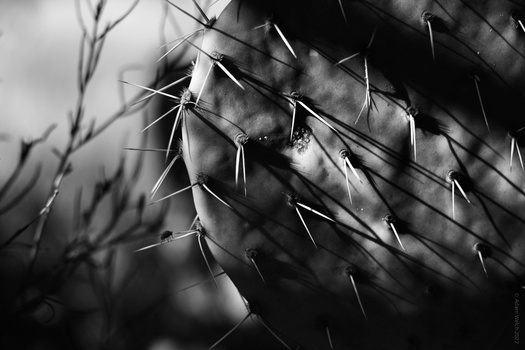
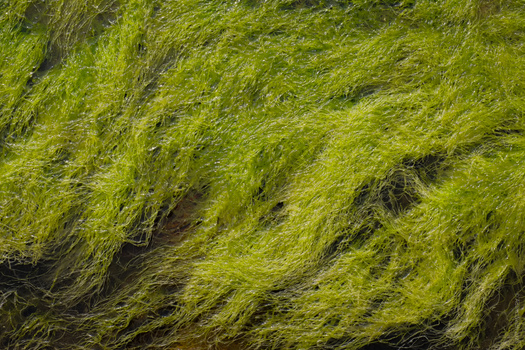
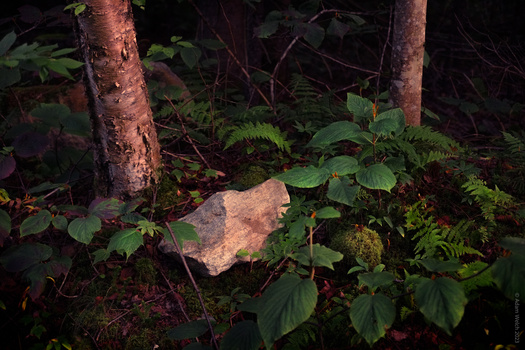


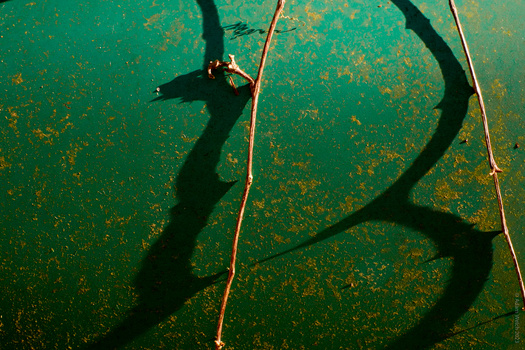
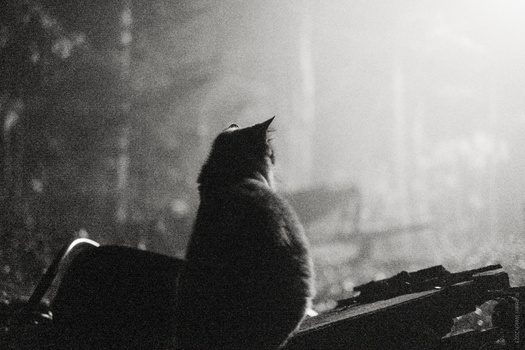
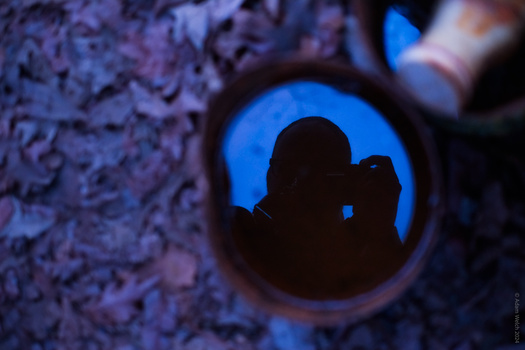

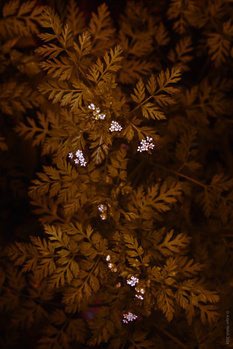


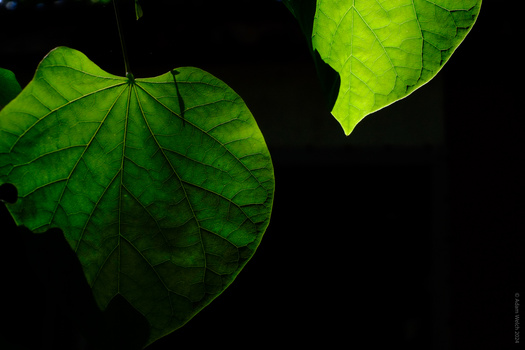



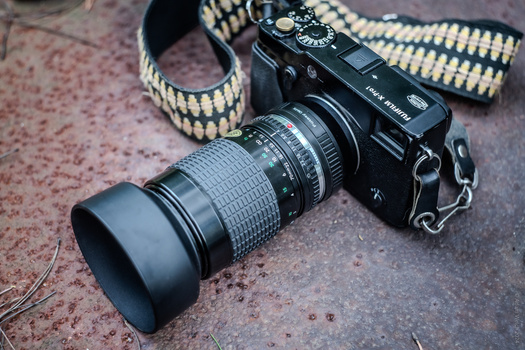










mine is a Canon EOS R which i did not really want to buy as i already had a 5D Mark iv and found the EOS R to not quite fit my hand.
it has served as a hybrid camera for me to do both photos and Full HD videos mostly in the form of family documentary photography and videography
sometime in the future i may have to upgrade to something that shoots 4K well but for the time being, its 30.4 megapixel sensor produces colours that i love and images that i cherish
Great cameras, the R series Canons. R6?
the original 30.4 megapixel EOS R.
I’m currently Fuji-less, but I've owned a few over the years (X-T1, X-Pro2, X-E1, X-E3) along with a handful of lenses (14/2.8, the f/2 trio: 23/35/50, 18-55). I'm a Nikon shooter, but went with Fuji for travel as the Nikon 1 series, was not up to the task for me. While I got some good results, I never really bonded with them. I think a lot of it was the clumsy menu system which frustrated me to no end. When Nikon released the Zfc, I picked it up along with the 16-50 and found myself the travel kit I was looking for. Much lighter and compact than any of the Fujis. I've since added the 24/1.7 and 50-250 and couldn’t be happier with the results. I also prefer the latitude of RAW files, so I never really got into the Fuji film simulations. As for my Ishmael, it would have to be the Nikon Zf. It's brought my shelf full of Ais lenses back to life and can also hang with the best AF cameras out there. Oh, and my Trigger is a beautiful Martin OM-28. Will never part with it. I enjoyed reading your article. It brought back some fond memories.
Man. Tom, you really hit home with me about your Ai-S lenses. When I was a teenager my dad stumbled on a F3 HP kit in a pawnshop. The camera, a few accessories, original Nikon strap, plus a MINT 85mm F/1.4 and 50mm F/1.8 Ai-S. I still use both lenses to this day and it occurred to me as I type this that I should be ashamed for not owning an adapter for the Fuji to use that old Nikkor glass. Granted, that 85mm will feel like an anchor on the front the X-Pro, but the bokeh will be pure cream.
I've actually been extremely curious about the Zf system myself. I'm legitimately curious when I ask this, does it feel like they (Nikon) were trying too hard to recapture the SLR feel or is does it seem to be its own animal entirely? I can't rule out saving up for a used model.
And thank for the kind words about the article. Glad it...wait for it...struck a chord.
I'll be here all week, Tom.
But seriously, I'm glad you enjoyed the writeup and I appreciate you taking the time to share your thoughts.
Hi Adam, Thanks for your reply. I don't think Nikon "tried too hard" to recreate the SLR experience. That my have been the case with the Df (i.e. no video), but the Zf seems to be loaded with new tech (latest Expeed chip for AF subject detection, MF with eye detection, VR centered around focus point etc...). The biggest complaint I hear about the Zf is that the Z lenses do not have aperture rings (sure, some can be programmed, but that not quite the same), but that's not the camera's fault. I find the Zf to be an extremely flexible body. I can shoot more deliberately with adapted MF lenses (from any mount with the right adapter) and use the dials on the top, or I can configure it to ignore the dials and use it with the Z AF lenses just like any other Z body for things like sports or wildlife. My only complaint is the lack of programmable buttons (or Banks). To take advantage of all of the features, I reprogram the buttons when switching MF and AF lenses. I've gotten used to it, but it means I typically bring either all MF or all AF lenses with me when I go out shooting. The best thing I like about the Zf is that it saved me a bunch of money as I had been (kind of) considering getting a Leica as a travel/street camera. That itch is gone (for now :-).
I felt the same way, until my X-T died on me in every conceivable way. Poor quality control broke us up. 😂
Hate to hear that. What happened? Just complete DOA?
Over the course of about 2 years the EVF got so laggy I couldn't use it, the mechanical shutter failed and left a black mark across half the frame all the time unless I used electronic shutter — so I was down to an LCD only electronic shutter camera. Then finally the camera stopped taking any kind of charge from the battery, even official Fujifilm batteries.
I contacted Fujifilm, but they said the repair warranty was only valid in the country of purchase, I bought mine on vacation in the US. I had to just let it go by that point.
Damn. That's wild to hear. It was new when you bought it? Sort of scary.
100% brand new. I typically buy the camera I expect to rely on straight from the manufacturer if possible. Did the same for the Ricoh. I don't like to take chances, but I think it is never a certain bet.
The longer I spend in the world of photography, the less any specific camera can make by blood boil. It is just a tool. What matters is you and your skills with that tool. When is the last time you saw a picture and realised it is good _because_ it was taken with specific camera? Everything is post-processed anyway, so all the talk about sensors, colour science and what have you can be put on the shelf. It's great you like Fuji. I shoot Fuji too. And Sony. And large format. But who cares about tools, it is the output that matters to the customer/viewer.
I thought the same way until realizing there is an option where post processing isn't required. If you're shooting raw then yes, a camera is a camera. Once you decide to shoot JPEG and always get the shot right in camera the tool absolutely matters. It doesn't matter which of my Sony bodies I grab- shooting just JPEGs yields just ok looking photos that would still need post processing. Grab any of my Fuji bodies and select a film sim and I've got images I'm willing to post or print without ever needing post processing.
I have yet to see a SOOC JPG image that doesn't look like a snapshot.
Yep. In the early/mid 2010's, proper, lab testing of different sensors showed how bad foveon sensors were, compared to bayer, in color reproduction. Personally i think the reason fujifilm fans love the .jpgs the camera produces, is because the .raw files have genuinely terrible color rendition. Every lab test comparing fujifilm raws to other contemporary sensors showed a shockingly deficient system.
Very interesting, Robin. Can you share some links or other direction to those tests? I'd be interested to study them.
Snapshots can/have impacted the world have they not?
Then, they are not really snapshots. The snapshots I'm referring to are those taken by people that like to take photos of random things and brag how they don't edit/post process. They just accept whatever their camera gives them.
I hear what you're saying, Thomas. Always a good point and I agree with it on many levels. Still, just over the horizon of the idea that "tools don't matter" sits a place of harmony where the cameras we sling directly dictate the internal clockwork within the person making the photo. While I certainly agree that tools are just that, tools...the notion that certain chisels and brushes and cameras don't resonate on a nearly incommunicatible level is to overlook the one thing very often forgotten when it comes to the madness of creation: it should be thoroughly and completely enjoyed. If something makes the creative process more enjoyable, and therefore more fulfilling, it should be readily embraced.
I had a X Pro 1 and then a 2. I’m now sorry I sold the system and am reconsidering getting back into it. Does anyone know the widest lens that gets the pop up frame lines in the optical viewer as opposed to the electronic one. Does that information hold true for all the X Pro Models?
Ooof. Good question, Warren. I know for a fact Fuji's 27mm gives frame lines, other than that no real idea.
“He shall be a wild man; His hand shall be against every man.” Genesis 16:12
Ironically, this Ishmael has also spent his fair time marching through the desert...although under extremely different circumstances :D
I really like your comment that the best camera is not the one you have with you, but the one that makes you want to pick it up and go take photos. I was a die hard Fuji fan, with my old X-T1 and newer X-H1, but I found they strugged with fine details when it came to greens and browns, especially when in the same composition. That's not to say they don't take amazing photos in this colour range, but in certain compositions, I just found the detail to get muddied. Maybe the Fuji sensor technology as you described it has something to do with that. I ended up going back to Sony. I have an A7R2 which I love, along with an A6000, which would be my nostalgic equivalent to your X-pro1. I miss the Fuji colour science, which is a real thing, but luts and post processing tweaks can help me get close enough to compensate for the details I want in my photos.
Great article. Thanks.
I appreciate you sharing your experience with this, Don. You've got me wanting to go back through my archived photos that are primarily green oriented and see for myself about the detail degradation you mention. Very interesting.
Thanks a lot for taking the time to read an admittedly long-form article on a familiar subject. Glad you enjoyed it.
Thanks for the wonderful article about Ishmael. I had a wonderful relationship with a X-Pro1 and the XF 35 F1.4 as well until I had electronic glitches with the camera (drains batteries). I replaced it with a X-Pro2 and continue my photograhic journey. I added a XF 27mm F2.8 WR as my go anywhere kit. The XF 35mm F1.4 is still my favorite Fuji lens.
Thanks a lot, Johnny. I've got a buddy down in Mexico that pumps out extraordinary photos with his X-Pro 2. Great camera. Thanks for reading and I'm happy to know you enjoyed it.
My dear Adam. Mine is what is considered by most afficandos, pundits, you tubers and generally most of the public the ugliest Leica ever made. The M5. You know her name. And you know, that like you (and I’m certain in private many others) a camera doesn’t get a name until it deserves it.
I had a scare with her just last week. I had to drill out the battery cover. There was no other alternative. (I had tried them all). Luckily I was able to pick up a new cover and she is as good as new. I know - it’s a mechanical camera and I don’t really need a light meter so why bother?
You - and many others know the answer to that one too. And if you don’t then you haven’t yet named your camera.
First of all, publically and for all to see, I apologize for once again being behind in our emails.
I literally did a double take when I read the part about the surgery on battery cover...glad to hear all is now well. And it's not that you NEED the meter, but we both know not fixing it would drive you up the wall, just as it would me.
How can an opinion be incorrect?
This is what happens when guy fell in love with tech :)))
I fully agree that old fuji cameras has its “mojo” but it has been lost completely with newer models
With lenses, I have used several manufacturers but fuji won in lack of quality control, from 7 lenses I had, 3 have been replaced because of various issues
As for 35mm f1.4 - yes, optically great lens, but its motor is slow and loud, far from “nearly perfect” in my opinion
Nevertheless, I stop reading at “ Insanely Pure JPEGs”, I guess later was “pure organic bio raw” :)
Take it easy, camera is just a tool, as Martin N-20 was for Willie ;)
"Pure organic bio raw" is in the next article. I also have a recipe for a pretty damn good peach cobbler.
I Hate My X-Pro 1
I hate it every year. It's 12 years old. I hate almost everything about it.
The autofocus is hit & miss - mainly miss. Manual focus is even worse: the EVF is awful and has no diopter !!! The screen on the back has the image quality of a 1950's TV.
The camera is slow - I learnt my trade on film cameras and this still feels slow - and clunky.
I'm left eye dominant, so the "rangefinder" design doesn't suit me.
Don't mention battery life - or rather, lack of it.
I said I hate almost everything; so what don't I hate:
I quite like the way the camera looks (a bit shallow on my part, I know). And the 'solidity'.
But my main like is the image quality, which is indescribable. I've not experienced anything like it and I use medium format cameras much of the time. Because the screen and evf are so poor, I never know for sure what I have until its on the computer screen. I frequently sit staring at the screen with my mouth open at the image captured. Oh, my God ! - It is no use for action, sports, wildlife, birds, children or anything that moves randomly - but still-life images are sprinkled with fairy dust - like Dutch Old Master paintings.
At the end of every year I compile a folder of my favourite images I've taken that year. I have access to a lot of cameras. I also own a lot of cameras.The fact that (12 years on) the X-Pro 1 is still heavily represented in my Best of the Year file is testament to why I still have & use the camera.
If it was just me that feels like this, I'd think this was just a quirk. But the internet is full of people in love with this camera. I wonder if Fujifilm know why.
I'm sorry to hear you hate most things about the X-Pro, Rob. That must be an unpleasant feeling.
But have you tried naming it to see if it helps?
It's unpleasant in the same way that being in love is unpleasant.
I'm not sure that naming it would help.....
Thanks for a great article.
hi, you invited us to challenge you - you said "Fight Me".
i have had three Fujifilm X-Mount cameras, an X-E3, an X-Pro 2 and an X-T4 and my Dad owns an X70 and an X-T2. i also gave a friend an X-E3 quite a number of years ago. i also have full frames and a medium format.
i have no issues with the 24 and 26 megapixel X-Trans sensors but the 16 megapixel X-Trans sensors exhibit the dreaded Fuji worms which sometimes ruin images. there are a few images that i think are irrecoverable though Fujifilm affectionados might know how to cure them. i am glad that Fujifilm has progressed beyond X-Trans 1.
also, i do play guitar and i currently own six made in America Taylors, also having given away a Taylor Electric to a former Pastor friend. in terms of guitar, one would choose the guitar that would fit one's mood. perhaps if one were performing, then he or she would choose a guitar that would suite the songs or event. i often say to people that the choice of woods is partially determined by whether the guitar suites one's voice and not just what the guitar sounds like. also, some guitars sound better alone and others do fine in a band.
i am of the opinion that like an artist who would like to have a selection of colours and perhaps different media, e.g. oils, water colour or acrylics, charcoals, etc. that one might want to have a selection of several different cameras (and lenses) to suit the occasion and the artistic expression or if it were for work, then for the job or client. it might be limiting to insist on having only one choice when there is no restriction on cameras and where the prices are usually not exorbitant.
guitars may be better investments as they usually improve in sound with age and often increase in value. pre-war Martin guitars can be purchased for tens of thousands. some say that those guitars were made with construction techniques that have been abandoned and of hardwoods that are now illegal to harvest. but cameras have their value and for those who do photography and have the choice, having a selection of cameras and lenses is usually a benefit rather than a luxury
also, i have had two Fujifilm GFX cameras, a GFX 50R and a GFX 50Sii and i somehow find that though the colours of the RAF files seem identical to the eye as the X-Mount cameras in both Lightroom and in Capture One, they feel as if the colours are somehow different and the only possible reason i can think for this is that the GFX cameras use Beyer arrays whereas the X-Mount cameras use X-Trans arrays.
Every Fuji user has their own reasons for choosing the x system. Some get all emotional about JPEG colors or pseudo-rangefinder ergonomics. I just feel the X system offers the best compromise of quality, size and cost. No emotions.
The camera that I had a similar attachment to was also a Fuji, but film-based and not digital. The Fuji GS645s. I've replaced the original twice since the 90s. Because of the 645 I tried the X-Pro1 hoping for the same spark, a somewhat similar experience. It was close enough, but I had to sell the Pro1 after a brief time.
Several years later I bought the Pro3 a few months after its release. (Remember those days when you could get a new model without a 4 to 6 month wait?) I still owned the 35mm 1.4, and paired with the Pro3 it has turned out to be my go-to kit. Even though I capture RAW + JPG, most often I shoot for the JPG using the MGA Leica M10 Monochrom simulation.
It's not the camera, it's not the photographer, it's the combination of both. Thankfully there are hundreds if not thousands of pairings available for anyone so inclined to find their own version of "go-to".
I’ve never understood the fetishization of objects like this. To each their own, but I’m not sure I’ve ever wanted to f’k anything as much as some people seem to want to f’k their cameras.
As far as I know, Amanda, as long as you're not threatening or otherwise being antagonistic with the use, you can say "fuck" in the editorial sense all you want. Nobody is going to arrest you.
A very timely article. I have been very aware of how much time I have been spending on the streets with a brace of Fujifilm XTs, 1 and 2. And flattering the Panasonic GX9 and its other stable mate the Olympus OMD EM5Mkll.
All the while, my one-time, and only street photography companion, sits in a draw, semi-retired, semi remembered, the Fujifilm X Pro I. My second Fujifilm, after the X100. We used to go everywhere, Sheffield, London; down the King's Road, on to Kelham Island.
Now, thanks to you, the X Pro 1 is out of the draw and the Asahi Pentax Super- Takumar 35mm, that was on the XT-1, is now firmly attached to the X Pro 1. And we have a date tomorrow lunchtime on the streets of Sheffield.
Yes, a lot of photographers don't get it. But I have long gone past the point of explanation. Either you have an X Pro 1 or you don't.
Call me Ishmael.
Steve, I'm weirdly happy to hear your X-Pro 1 is coming out of retirement. As I read your comment I felt myself slowly nodding with approval. Happy shooting, my friend.
The pictures are stunning. I think saying a camera is just a "tool" is a bit like saying a racehorse is just a tool to win a race. These things have their own personality and quirks. I think we personify them because they do have an impact on the work that we make and even the way in which we see.
I think you summed up my attitude towards the matter, perhaps even a well-said summary of the points made from the entire piece, absolutely perfectly. And thanks for the kind words about the photos. I need to get out with the Fuji more lately.
Great article on bonding with a great brand/camera model regarding "I'll Die on Fujifilm Hill" article!!! I love my XPro-3 though I have to say I could have easily stayed with the XPro-2.
I'm by no means a professional photographer. I take photos for myself, family, and friends. So, street photography, architectural photography, and landscape photography line up well with the XPro-3 camera.
I hope others find their "go to" camera and get to enjoy the entire process of photography with whatever brand/camera model meets their needs!
Thanks a lot, Bill and I'm glad you enjoyed the piece. Something I just now realize that I forgot to mention is that I'm extremely curious to one day compare my experiences with the X-Pro 1 to say the X-Pro 3. I think I would enjoy the complete hideability/protection of the rear LCD. That's the only thing I would prefer on the X-Pro 1 if for no other reason than making the camera feel more secure.